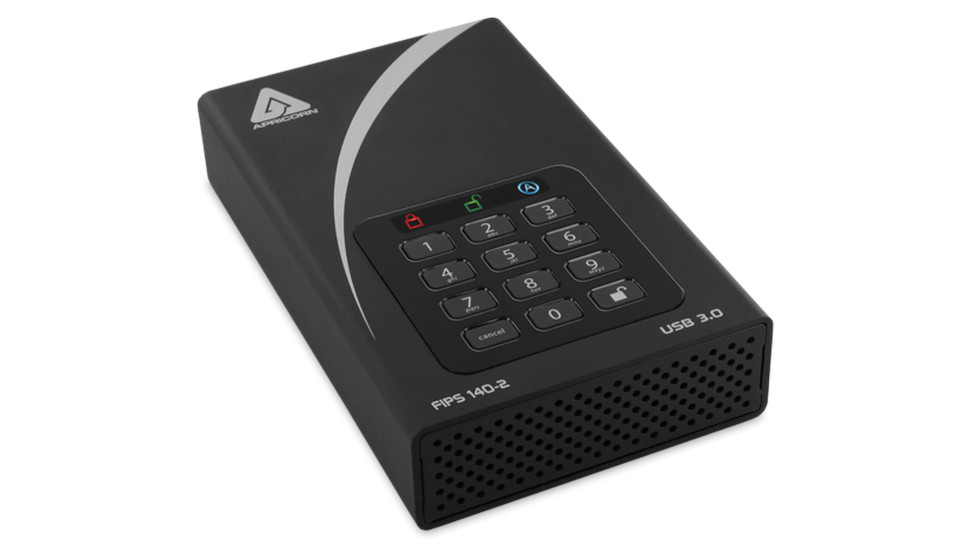Here’s the world's largest external hard disk drive - and it’s super secure
Meet the Aegis Padlock DT FIPS desktop drive

It’s only been a few days since we reviewed the Seagate IronWolf Pro, the world's first 18TB internal hard drive, which also proved to be one of the fastest HDDs we’ve ever tested.
Now Apricorn has taken an unknown 18TB hard disk drive and dropped it into an external enclosure, creating the world's largest external hard disk drive on sale right now.
You can, of course, get your own drive and put it in an external chassis, but that’s not the point.
- Here's our list of the best portable SSDs right now
- Here's our list of the best rugged hard drives out there
- We've built a list of the best USB flash drives on the market
The Aegis Padlock DT FIPS is not your standard drive. It offers software-free, 100% hardware-based 256-bit AES XTS encryption, with an onboard keypad PIN (rather than a fingerprint reader) and ultra-fast USB 3.2 data transfer speeds.
All the data is encrypted on the fly (and at rest) and remains on the device itself - and that includes the PIN. The drive is completely cross-platform compatible and agnostic by nature, making it a great external HDD for Mac too.
But the most important quality, perhaps, is that it cannot be tampered with easily, as the internal components are protected with a layer of hardened epoxy and the proprietary firmware - Aegisware - is locked down to prevent any possible malware attacks.
How much does it cost? A cool $1,199 (about £957/ AU$1679) with free delivery in the US, including a three-year warranty, which is about twice what you can expect to pay for the bare 18TB hard drive.
Are you a pro? Subscribe to our newsletter
Sign up to the TechRadar Pro newsletter to get all the top news, opinion, features and guidance your business needs to succeed!
- Here's our list of the best cloud storage services available

Désiré has been musing and writing about technology during a career spanning four decades. He dabbled in website builders and web hosting when DHTML and frames were in vogue and started narrating about the impact of technology on society just before the start of the Y2K hysteria at the turn of the last millennium.